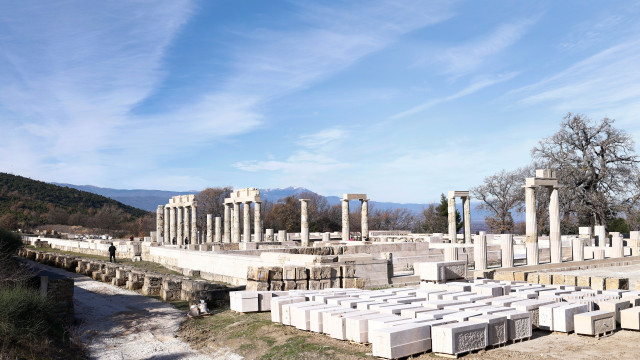Archaeologists claim to have discovered Alexander the Great's bath at Aigai Palace in northern Greece. The huge Aigai Palace, which stretches over 15,000 square meters and is larger than the Parthenon, is located at the ceremonial center of the ancient Macedonian kingdom.
Excavations also uncovered the palaestra, or gymnasium for martial arts, where Alexander trained, located adjacent to his bathing facilities.
The discovery will feature in the final episode of Channel 4's Bethany Hughes' Treasures of the World, which will air on May 11.
The site is located near the village of Vergina in the municipality of Veria in Central Macedonia. The young man who would become known as Alexander the Great spent his formative years in this magnificent building, and it was here that he took the throne of a kingdom that would extend all the way to India.
"A substantial drainage channel has been carved into the rock, as well as a communal bath. It is believed that this area is where Alexander the Great would have bathed with his companions, including his famous favorite Hephaestion, and the multitude of young men who accompanied him on campaigns and they later fought for control of his empire after his death.Hephaestion was called his deputy.They were both trained in fighting and hunting. According to archaeologists, his bedroom has not yet been identified," Hughes said.
After years of restoration, Greece reopened the Aigai Palace, where Alexander the Great was crowned, in January. Originally known as Vergina, the palace at Aigai is not only the largest, but also one of the most significant buildings of classical Greece, along with the Parthenon.
Built on an elevated hill in Vergina, northern Greece, during the reign of Philip II (359-336 BC), the palace is a significant landmark and symbol of beauty and power, three times the size of the Parthenon, visible from the entire Macedonian basin.
The palace at Aigai was designed for Philip II by an architect of genius, most likely Pythaeus, known for his contributions to the construction of the Mausoleum at Halicarnassus, the development of town planning and the theory of proportions.
Archaeological finds indicate continuous occupation of the site from the Early Bronze Age (III millennium BC), with its importance increasing during the Early Iron Age (XI-VIII centuries BC), when it became a prosperous and densely populated center ./BGNES
Archaeologists discovered Alexander the Great's bath in Aigai Palace







